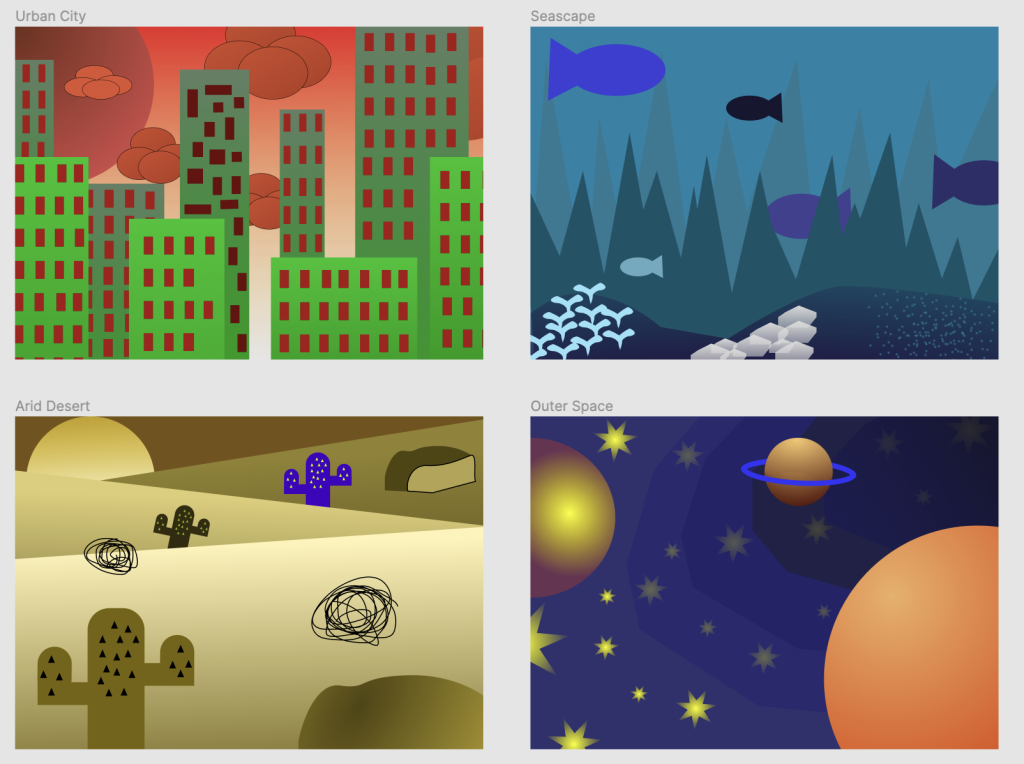
While with this second project I am getting more and more comfortable with the basics of Figma, there are just as many new skills that I’m learning, and that continued with this project. The important skills that I picked up doing this was how to use linear and radial fills, and the different relationships between colors themselves (complementary, analogous, split-complementary, and triadic).What was most easy with this project was using the different shapes to construct different objects such as buildings, fish, or planets; now that I’ve gotten accustomed to parts of Sigma, that part came easy to me. What was definitely most challenging was being able to apply each color theory to their respective environment; it tested my creativity and ability to be able to integrate them effectively. I think some frames could be improved by adding more detail, such as the barren landscape in the Arid Desert or the buildings in Urban City. I think this project could be really improved if there were more landscape choices to choose from, maybe scenes like a jungle or forest. Using the color knowledge I’ve gained from this project will surely help in the future to flesh out another project’s look and make it pop. An article that gave me a better understanding of color while working on the project was Cameron Chapman’s article that detailed areas such as color families, and primary and secondary colors.